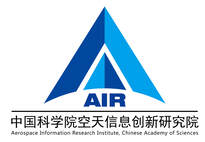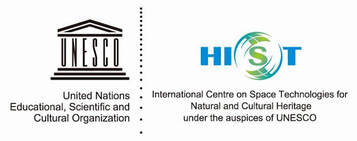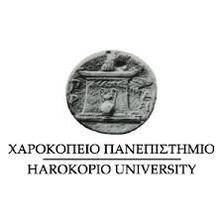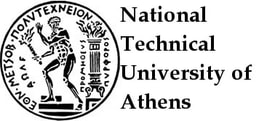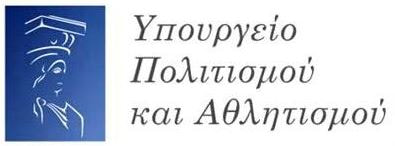China
AEROSPACE INFORMATION RESEARCH INSTITUTE, CHINESE ACADEMY OF SCIENCES
|
INTERNATIONAL CENTRE ON SPACE TECHNOLOGIES FOR NATURAL AND CULTURAL HERITAGEThe International Centre on Space Technologies for Natural and Cultural Heritage (HIST), a category-II centre under the auspices of UNESCO, was proposed to UNESCO by the Chinese Academy of Sciences in May 2007. The proposal was approved by the 35th General Conference of UNESCO in October 2009, and ratified by the State Council of China in April 2011. On 24 July, 2011, the launching ceremony of HIST was held in Beijing. This is the first UNESCO centre applying space technologies to the monitoring and conservation of world natural and cultural heritage sites. The centre is hosted by Aerospace Information Research Institute (AIR) under the Chinese Academy of Sciences (CAS).
HIST, offers an authoritative international communication platform for world heritage research using space technology. Guided by the development philosophy of UNESCO, HIST is hosted by Aerospace Information Research Institute (AIR) under the Chinese Academy of Sciences (CAS), by virtue of the software and hardware advantages of AIR with respect to space technologies. HIST will cooperate with research institutions, universities, world heritage organizations in related countries and regions all over the world including China to conduct research and training in the fields of natural and cultural heritage, biosphere reserves, climatic change and natural disasters. |
Greece
HAROKOPIO UNIVERSITY OF ATHENS (Project Coordinator)
Harokopio University (HUA), founded in 1990, is one of the youngest state Universities in Greece. Its relatively small size makes it a flexible, highly specialized and dynamic academic institution. It is active in academic research and teaching in the wider fields of ‘Geography’, ‘Home Economics and Ecology’, ‘Nutritional Sciences and Dietetics’ and ‘Informatics and Telematics’. Its ratio of journal publications per academic member of staff ranks it 4th among the 21 Greek Universities. During the last 10 years, over 300 national, European and company funded research programs were implemented by HUA, giving it again one of the highest ratios of projects per academic member of staff among Greek Universities. Through these programs, as well as its extensive ERASMUS educational exchange program, the University has built an extensive network of high quality co-operation with other academic and research institutes and the private sector in Greece, Europe and worldwide.
The Department of Geography was established in 1999. The scientific subject matter of Geography in the new department is made up of subjects like human and physical geography and geoinformatics. Within the Geography department, during the last 10 years, a remote sensing group was founded, as well as, a group working on geo-archaeology. These two teams are composed of geologists, geographers and engineers. The laboratory of Geoinformatics is equipped by the following hardware and software: Multiple high performance work stations (personal computers) for extensive processing requirements, GAMMA software including IPTA (multiple indoor installations), SNAP, ENVI, ERDAS Imagine, ESRI ArcGIS, SPSS and Matlab.
The Department of Geography was established in 1999. The scientific subject matter of Geography in the new department is made up of subjects like human and physical geography and geoinformatics. Within the Geography department, during the last 10 years, a remote sensing group was founded, as well as, a group working on geo-archaeology. These two teams are composed of geologists, geographers and engineers. The laboratory of Geoinformatics is equipped by the following hardware and software: Multiple high performance work stations (personal computers) for extensive processing requirements, GAMMA software including IPTA (multiple indoor installations), SNAP, ENVI, ERDAS Imagine, ESRI ArcGIS, SPSS and Matlab.
ACROPOLIS RESTORATION SERVICEThe Acropolis Restoration Service (Greek acronym YSMA) is a Special Service under the General Secretary of the Ministry of Culture and Sports, established in accordance with the Presidential Decree 97/1999, responsible for planning, directing and overseeing the restoration on the Acropolis monuments, under the general supervision of the Committee for the Conservation of the Acropolis Monuments (ESMA). However, the extended restoration program of the Athenian Acropolis monuments has been in progress since 1975 aiming at alleviating the effects of serious problems due to natural causes (i.e. earthquakes) or human activities (i.e. fires, bombardments or earlier restorations). All interventions comply with the “Charter of Venice” trying to focus on keeping the original construction principles of the monuments. In the course of these interventions, the parts of the monuments that had been restored in the past, as well as sections showing wear and breakage, are dismantled. The articulated system of construction, characteristic of classical architecture, greatly facilitates their structural restoration in the original form. New marble is only used for supplements when necessary for structural stability, while iron connecting elements are being replaced by titanium reinforcements. The authentic marble reliefs and sculptures are removed from their original position and transferred to the Acropolis Museum, replaced in-situ by casts in artificial stone. Scattered architectural fragments, which are identified, are returned to their corresponding monuments.
|
NATIONAL TECHNICAL UNIVERSITY OF ATHENSThe National Technical University of Athens (NTUA) is the oldest and largest educational institution of Greece in the field of technology. NTUA has a firm commitment to research thanks to its personnel and its extensive infrastructure, state-of-the-art laboratories and computing facilities. The faculty members undertake scientific work at the forefront of modern research, including experimental testing and numerical simulation of non-conventional engineering problems. The high research standards of NTUA are proved by the numerous publications in international scientific journals and the proceedings of international Conferences as well as by the prominent place of NTUA among Europeans Universities, due to the increasing number of research projects financed by the EU and other funding bodies. Past EU funding includes numerous H2020, FP6 and FP7 projects, five ERC IDEAS Grants and several Marie-Curie networking projects. Furthermore, the School of Civil Engineering (SCE) ranks among the top 40 Civil Engineering departments of the world (QS rankings), which is the highest ranking achieved by any university department of the country.
Τhe School of Mining and Metallurgical Engineering (SMME) includes five subject directions: a) Environmental Engineering and Geo-Environment, b) Mining Engineering, c) Geo-Engineering, d) Metallurgical Processes, e) Materials Science and Engineering. The stuff of the School includes 33 professors and several administrative employees. The Laboratory of Engineering Geology and Hydrogeology (LEGAH) belong to SMME employing 2 professors, 3 laboratory teaching staff and 2 technical employees. LEGAH NTUA operates two fully equipped laboratories covering all geotechnical and hydrogeological testing fields and also a variety of soft-computing software for performing numerical simulation. Also LEGAH NTUA has a wide experience in performing spatio-temporal analysis within a GIS environment applying statistical and machine learning techniques. |
EPHORATE OF ANTIQUTIES OF HERAKLIONThe Ephorate of Antiquities of Heraklion (EphAH) is responsible for the Antiquities from the Prehistoric to the Ottoman Period in the District of Heraklion, in Crete (integration of the 23rd Ephorate of Prehistoric and Classical Antiquities (23rd EPCA) and the 13th Ephorate of Byzantine Antiquities (13th EBA) since 2014).
The responsibilities of EphAH span from archaeological research and studies to architectural preservation and surface conservation and interventions on the monuments that belong to its supervision.The Ephorate of Antiquities of Heraklion (EphAH) is responsible for the Antiquities from the Prehistoric to the Ottoman Period in the District of Heraklion, in Crete (integration of the 23rd Ephorate of Prehistoric and Classical Antiquities (23rd EPCA) and the 13th Ephorate of Byzantine Antiquities (13th EBA) since 2014). |
TERRA SPATIUM SATERRA SPATIUM SA is a Greek SME with 30 years of focused experience and a wide range of capabilities in the fields of Remote Sensing and Geo-information. Taking advantage of the resources, skills and experience built since 1989 when the company was established, TERRA SPATIUM creates added value for its customers through application specific processing, production and dissemination of all-source geospatial data and Geo-information.
TERRA SPATIUM is able to design, implement, organize and support rigorous geospatial systems and customized applications. From system architecture & operational concept to software & hardware integration, including Geo-Data Base, Image Server, GIS projects and their respective Web application. Taking advantage of the resources and the highly experienced personnel TERRA SPATIUM is able to exploit big earth observation data offering cutting edge geospatial services with the use of various technologies (free and open source software, proprietary/commercial software), horizontal Spatial Data Infrastructures according to the INSPIRE Directive. Moreover, TERRA SPATIUM carries the industrial support of the Greek ground segment for the intelligence satellite HELIOS-II. |
